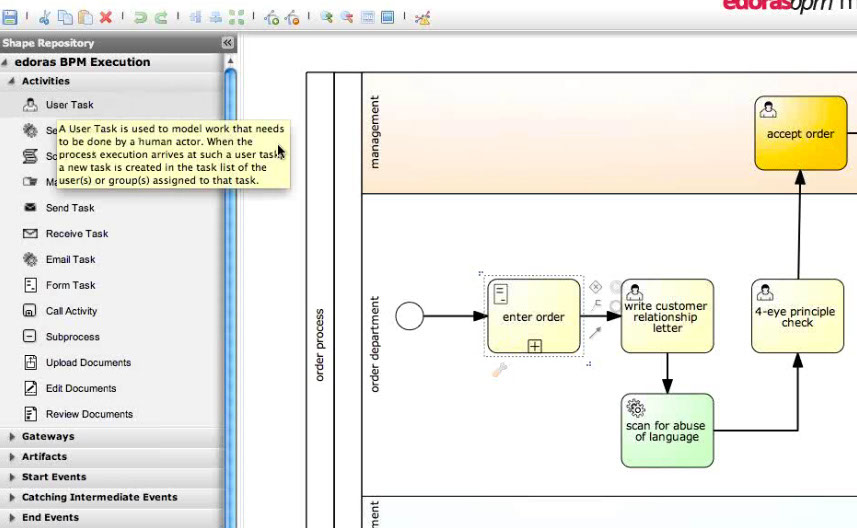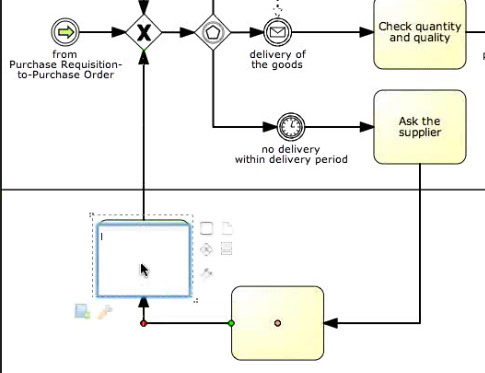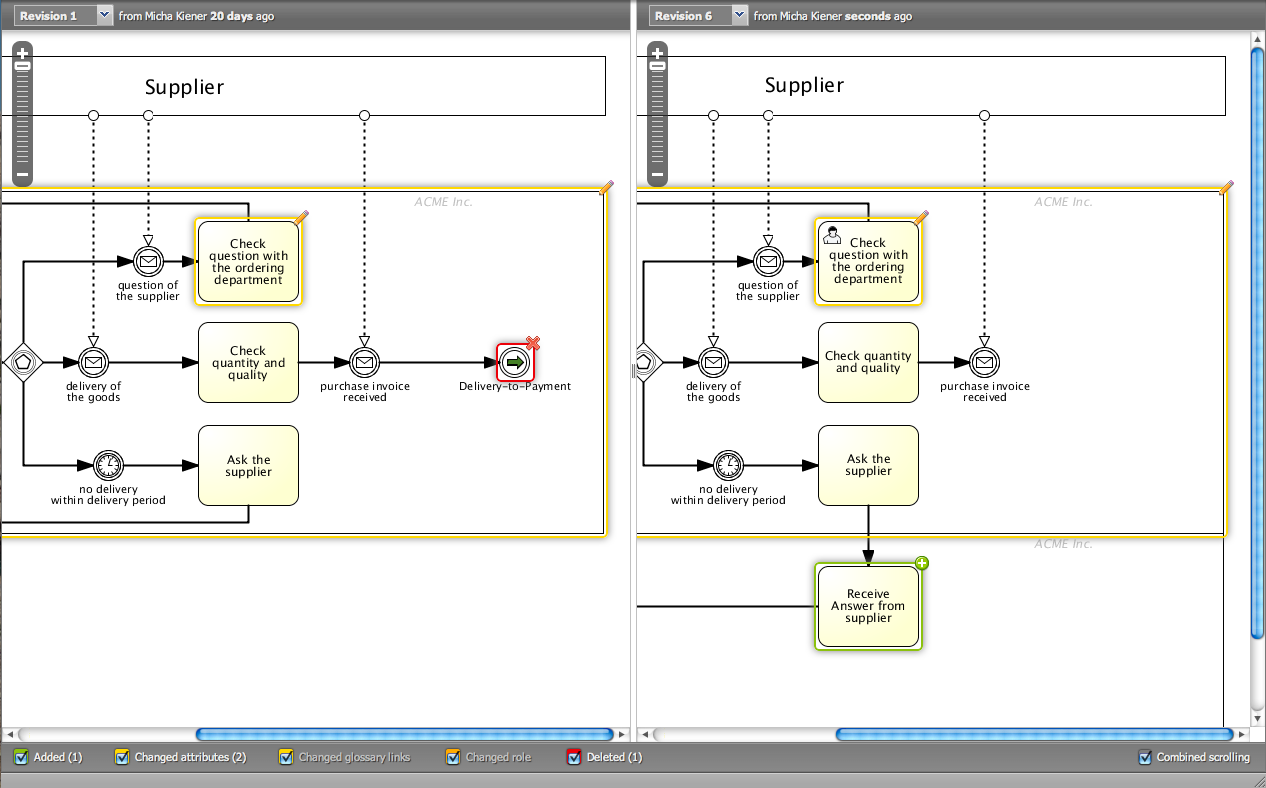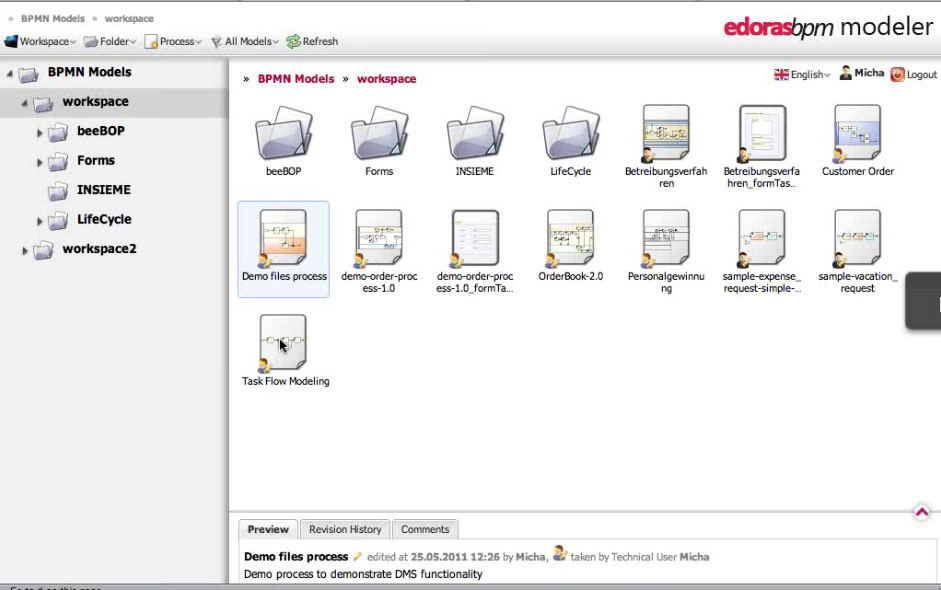BPM Process Modeling
BPM Modeling allows Managers and Business Analysts to define and manage the company's processes in a visual environment. It aligns different BPM disciplines and roles in a single tool.

Roles and collaboration
Several roles are involved in creating a process: managers, business analysts, developers, users. edorasbpm brings next-generation collaboration features right into the modeller:
-
easy collaboration between team members
-
user comments are shown directly into the modeler
-
critical paths and bottlenecks are visually shown
-
versioning allows to graphically see differences across revisions.
Usability
Several features make the modeler easy to learn and fast to use:
-
Drag and drop actions boxes automatically reconnects them
-
reshape and resize the models easily
-
inline form modeler with preview to easily create forms
-
the Process Fragments Toolkit allows to define subprocesses and reuse them in many workflows.

Model life-cycle
Creating a bpm process workflow is the single task that lets you achieve several goals:
-
Create high level business process models
-
Implement the detailed behaviour of each step:
-
design input forms
-
connect java beans or webservices
-
implement decisions
-
-
Document the process
-
Directly deploy from design time repository to the runtime repository
-
Manage your models and their revisions in a single repository
-
Monitor the process (find bottlenecks etc) and optimize

-
Compare revisions visually
Process models repository and deployment scheduling
The process model repository is where all versions of a repository are stored. Different revisions can be compared off the repository and you can view differences graphically.
You can control all phases a process model has to go through, both during creation and revision. edorasbpm will support the revision and approval processes for each process model, and allow to schedule the revision update. It will also take care of migrating open processes to the new process version.

